
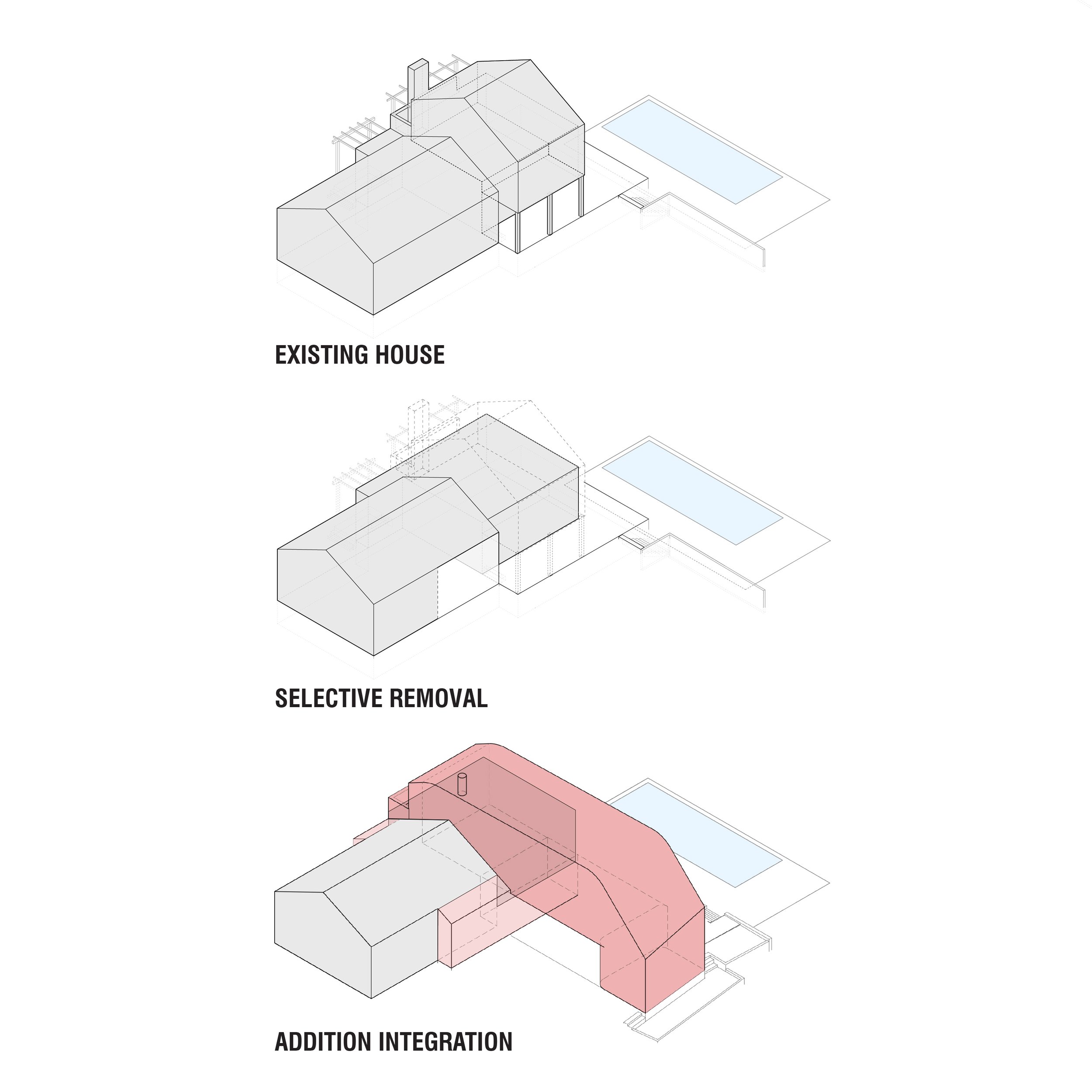
THREE MILE HARBOR HOUSE
EAST HAMPTON, NEW YORK
An addition to a house in the Springs was an opportunity to reconceive its relationship to the site overlooking Three Mile Harbor. The house, originally built as an uninsulated shingle cottage in a tight-knit waterfront community, had been added on to multiple times, resulting in a collage of styles and materials. Our clients bought the house and lived there for many years before asking us to redesign it to provide additional living space, create connections to the outdoors, and improve views of the harbor.
We added on at the second floor level to maximize views and capture the famous Long Island light beloved by artists through east- and west-oriented windows that transform the house throughout the course of the day. The second floor was conceived as a bridge over a new covered outdoor patio, supported by a private office that provides a sanctuary from the main house. The organic forms of the house were inspired by driftwood, worn by the sea. We relocated the main entry from the street to the interior courtyard, where one experiences views of the pool court and harbor from the covered dining terrace before entering the house.
Sustainable features are embedded in the design. The lot sizes in this shore community are small, making it difficult to locate water wells and septic systems that meet set back requirements. During design, we organized enough neighbors to have the town water line extended up the private road, allowing the community to connect to town water. To minimize construction waste, we saved almost the entire ground floor, basement and foundations.
A nitrogen-reducing septic system was installed to protect groundwater quality. The house is clad with thermally modified wood siding, expected to last at least 50 years. Roof-top solar panels supply 50% of the house’s electrical demand.

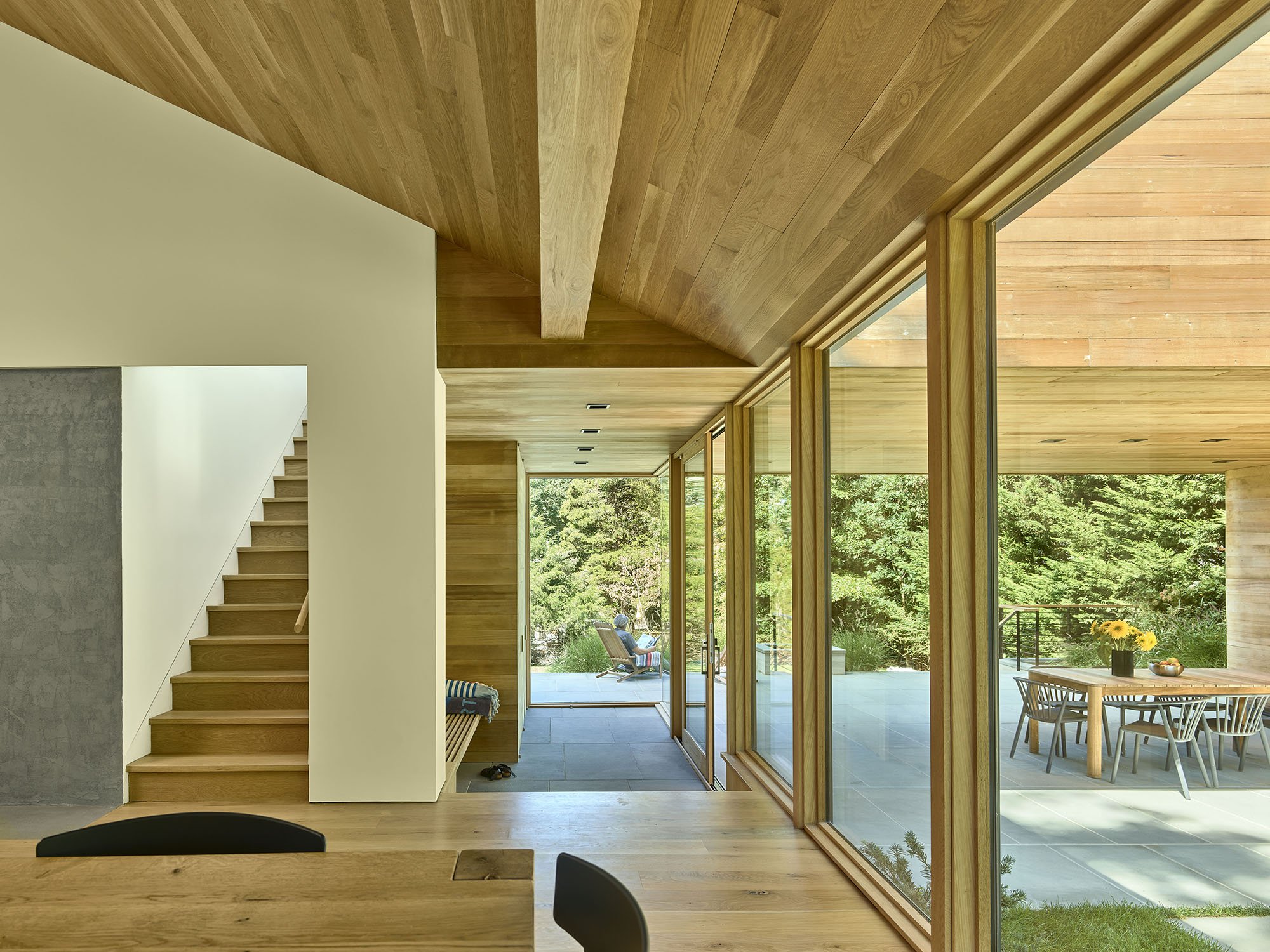

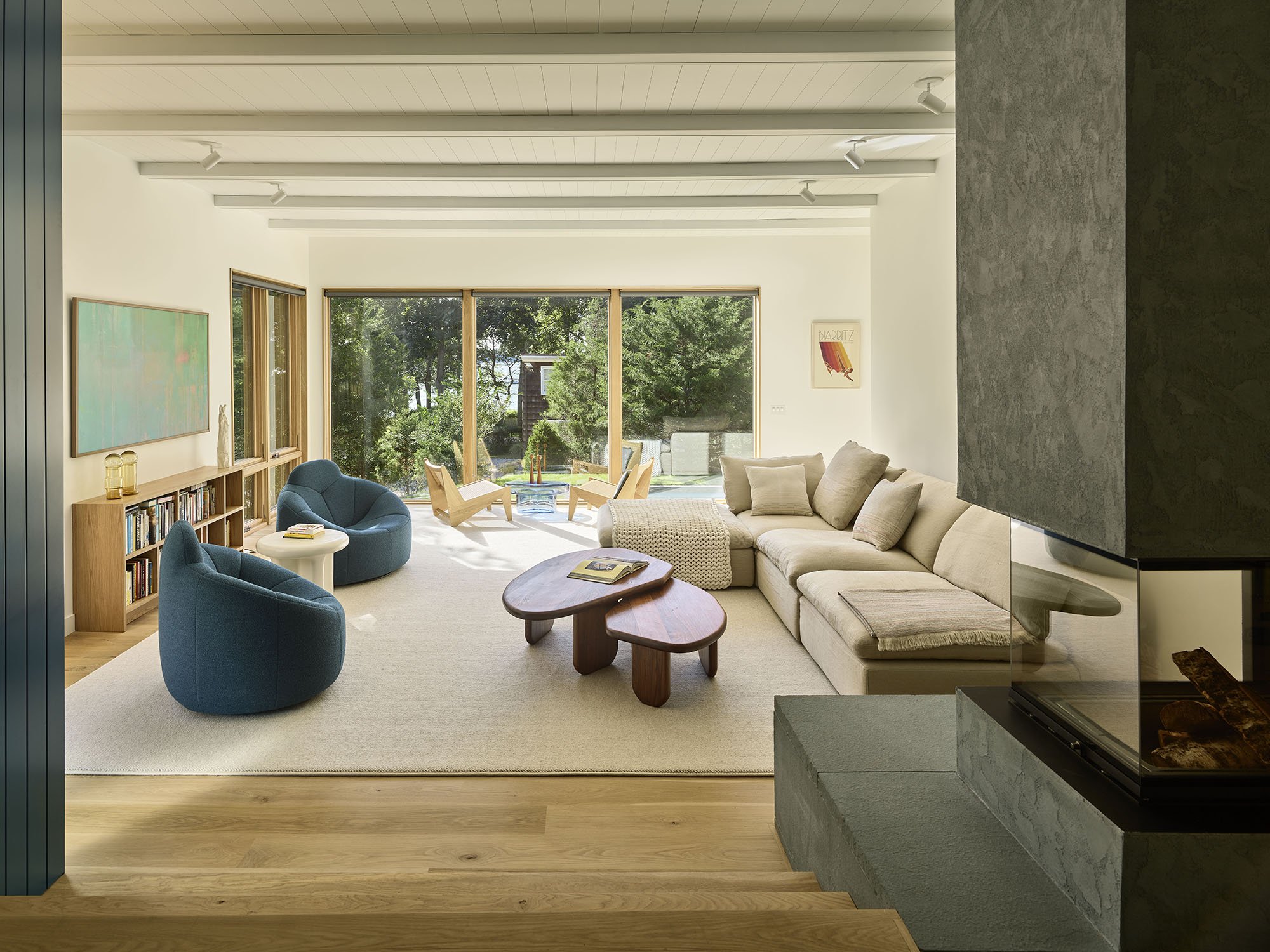
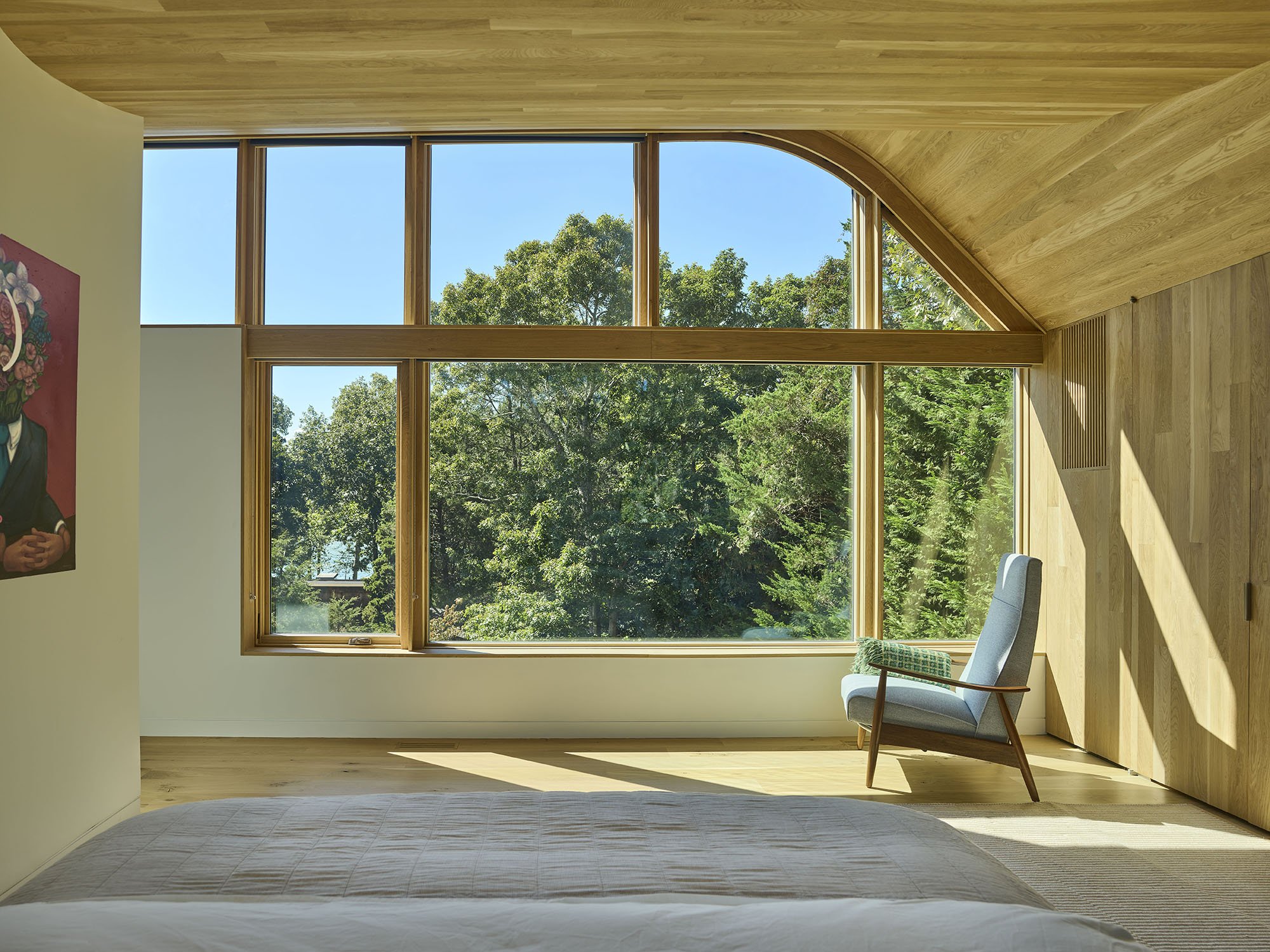
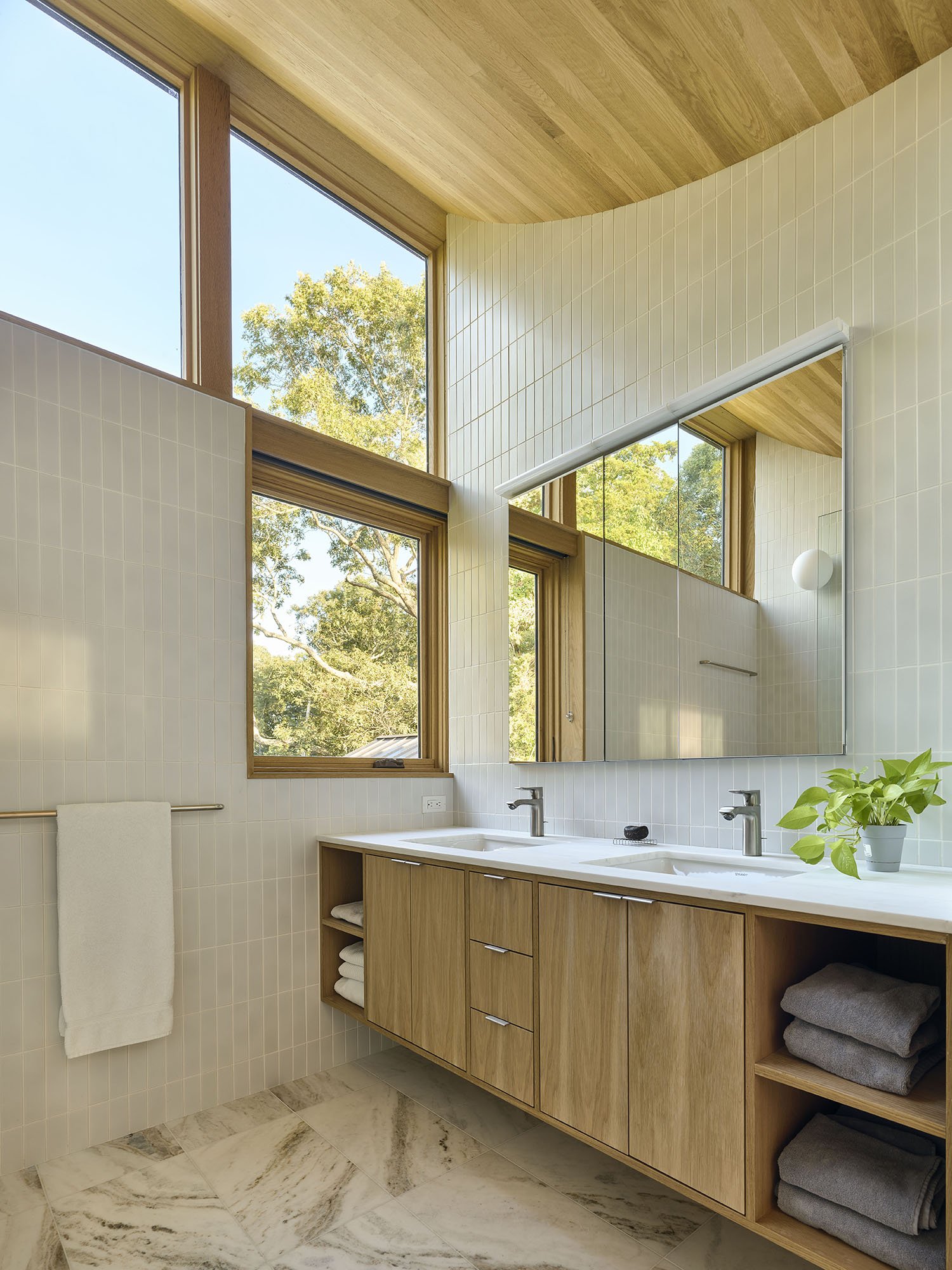
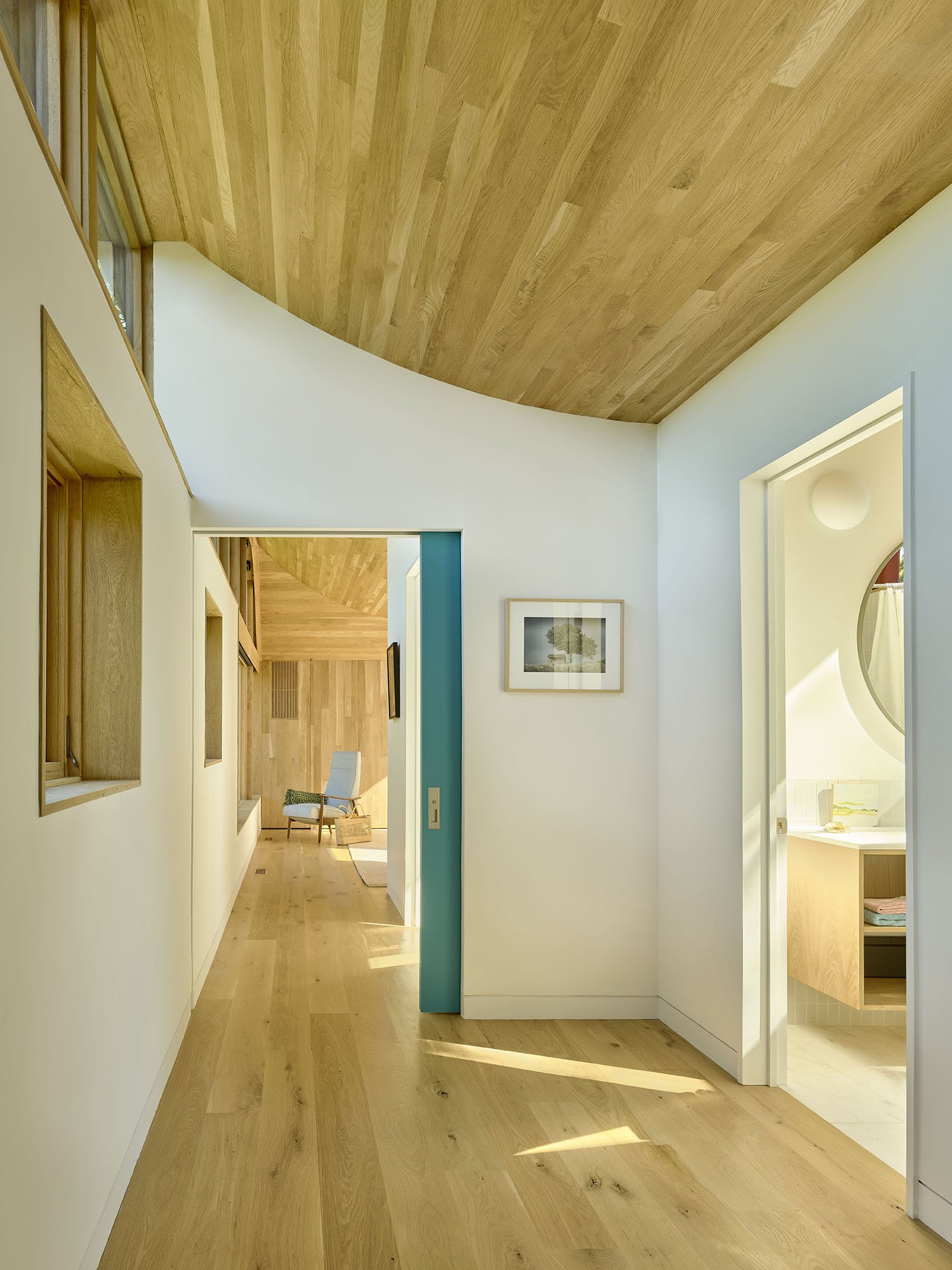
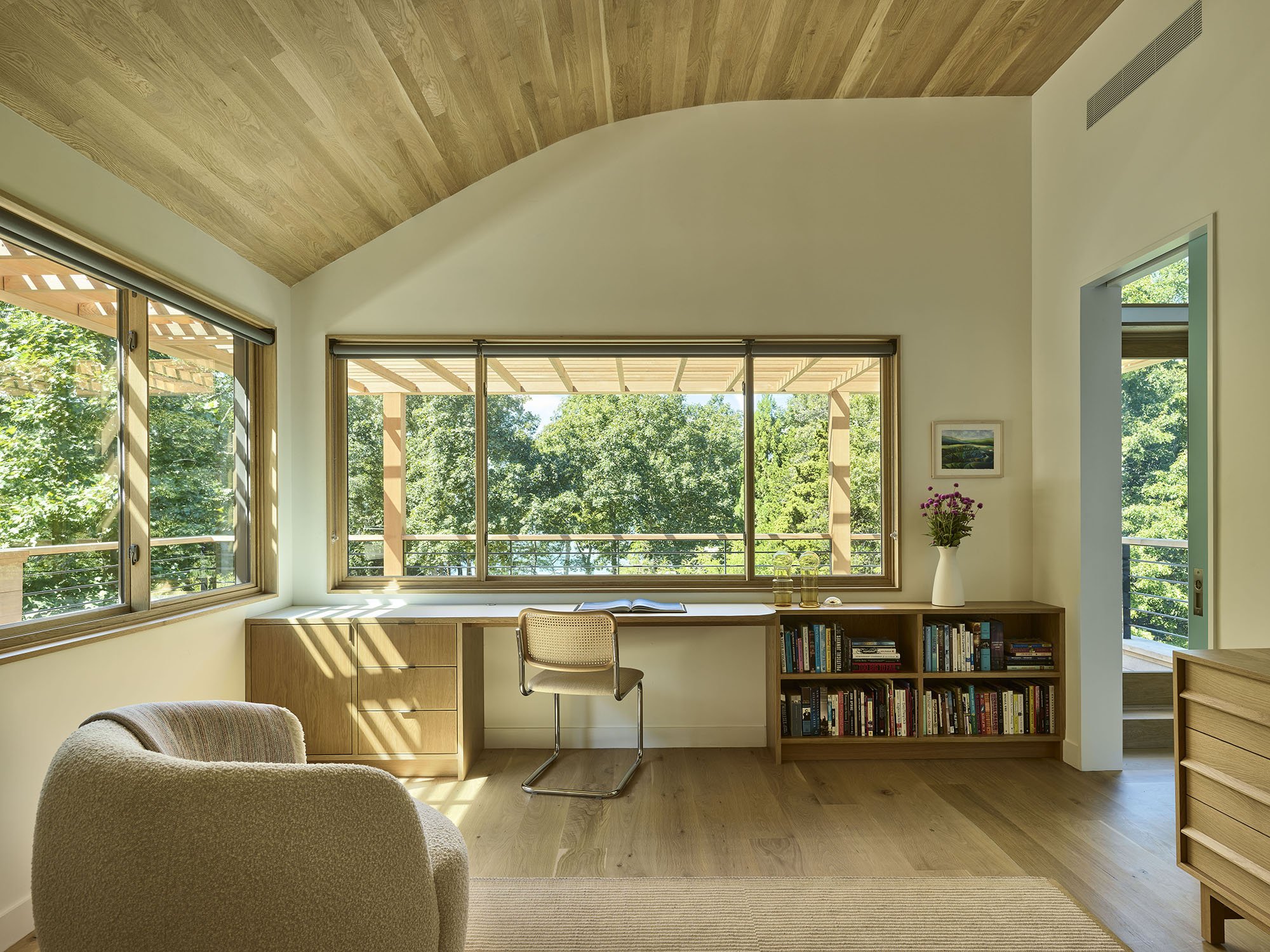
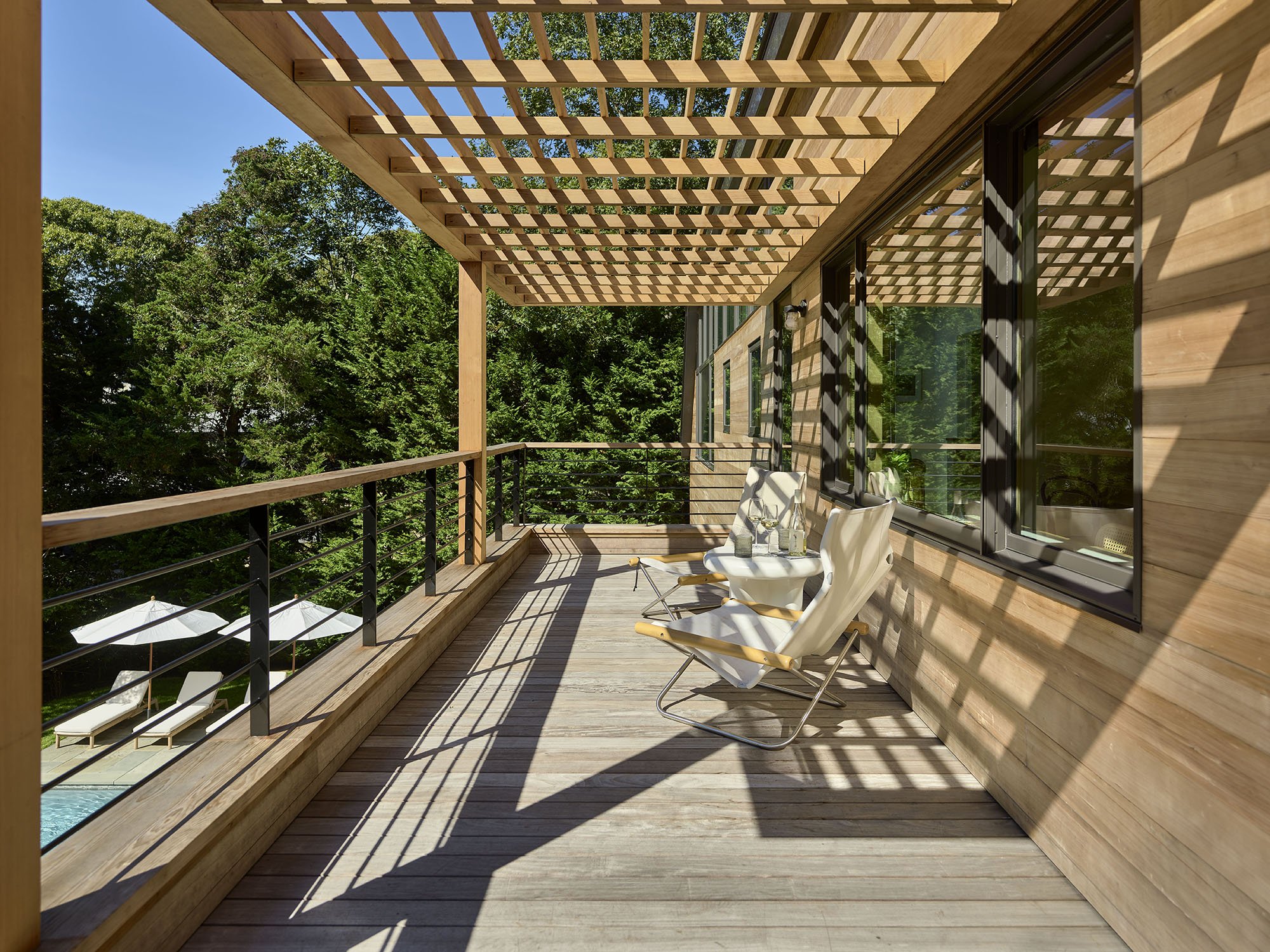
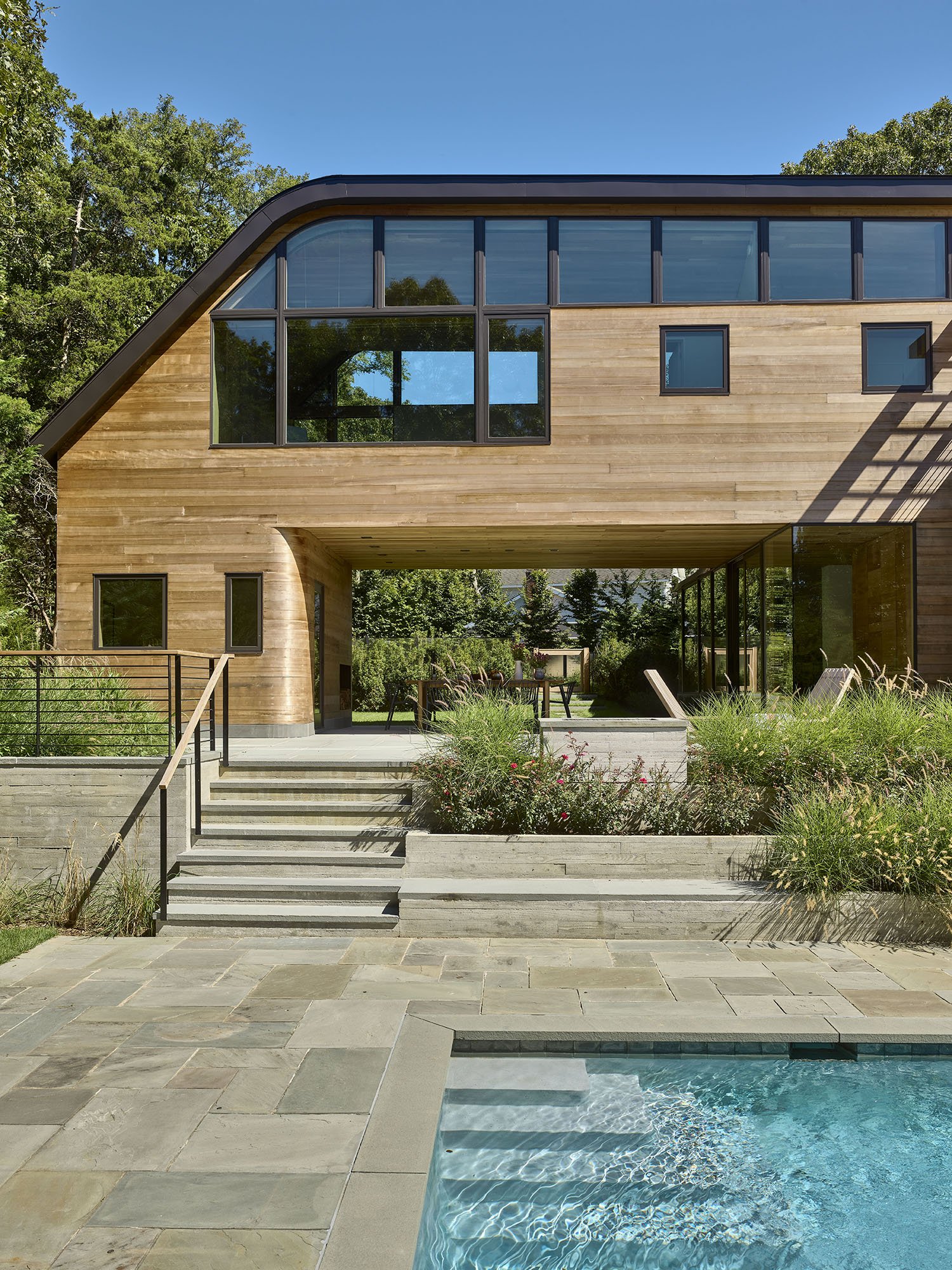
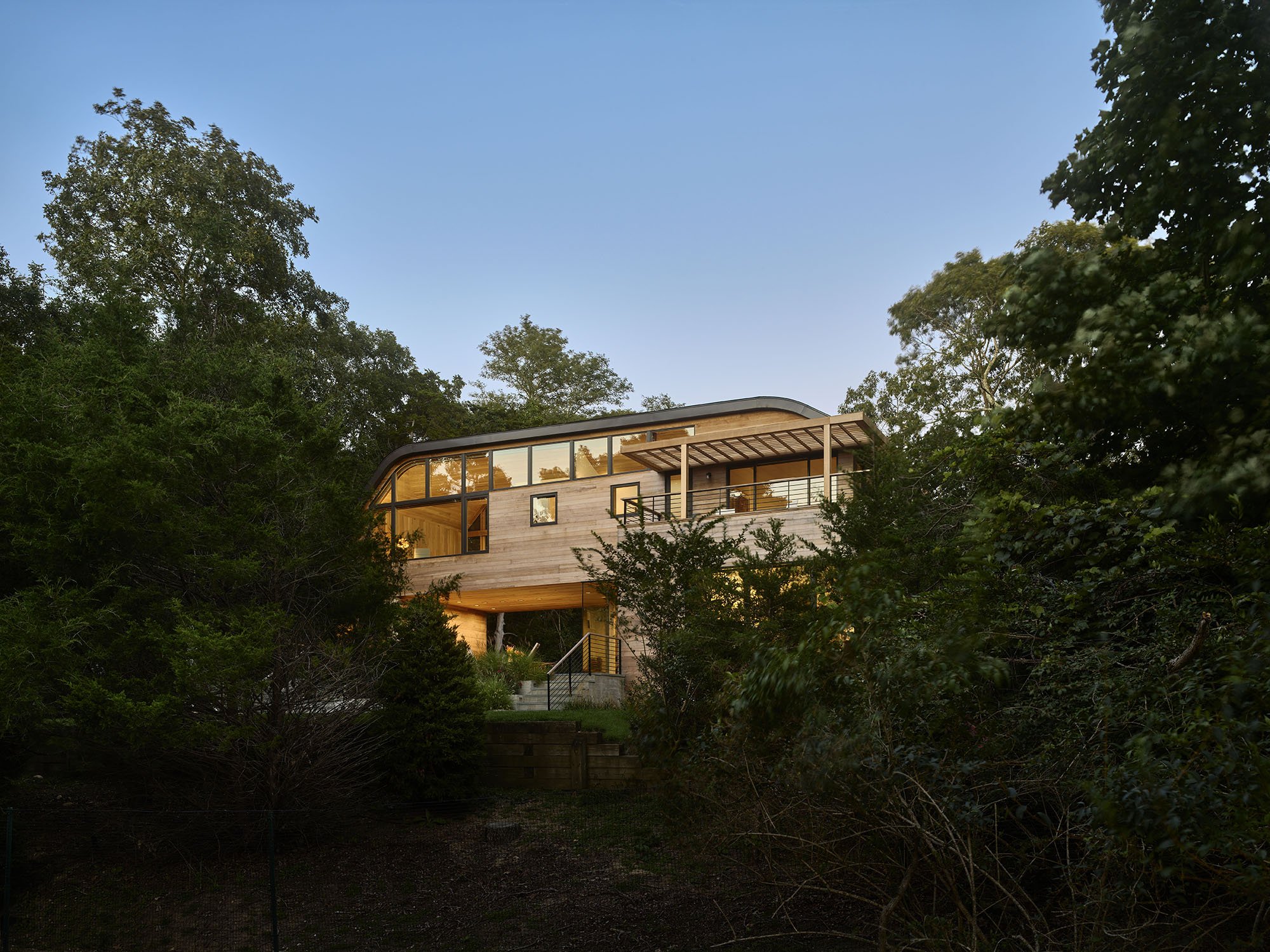
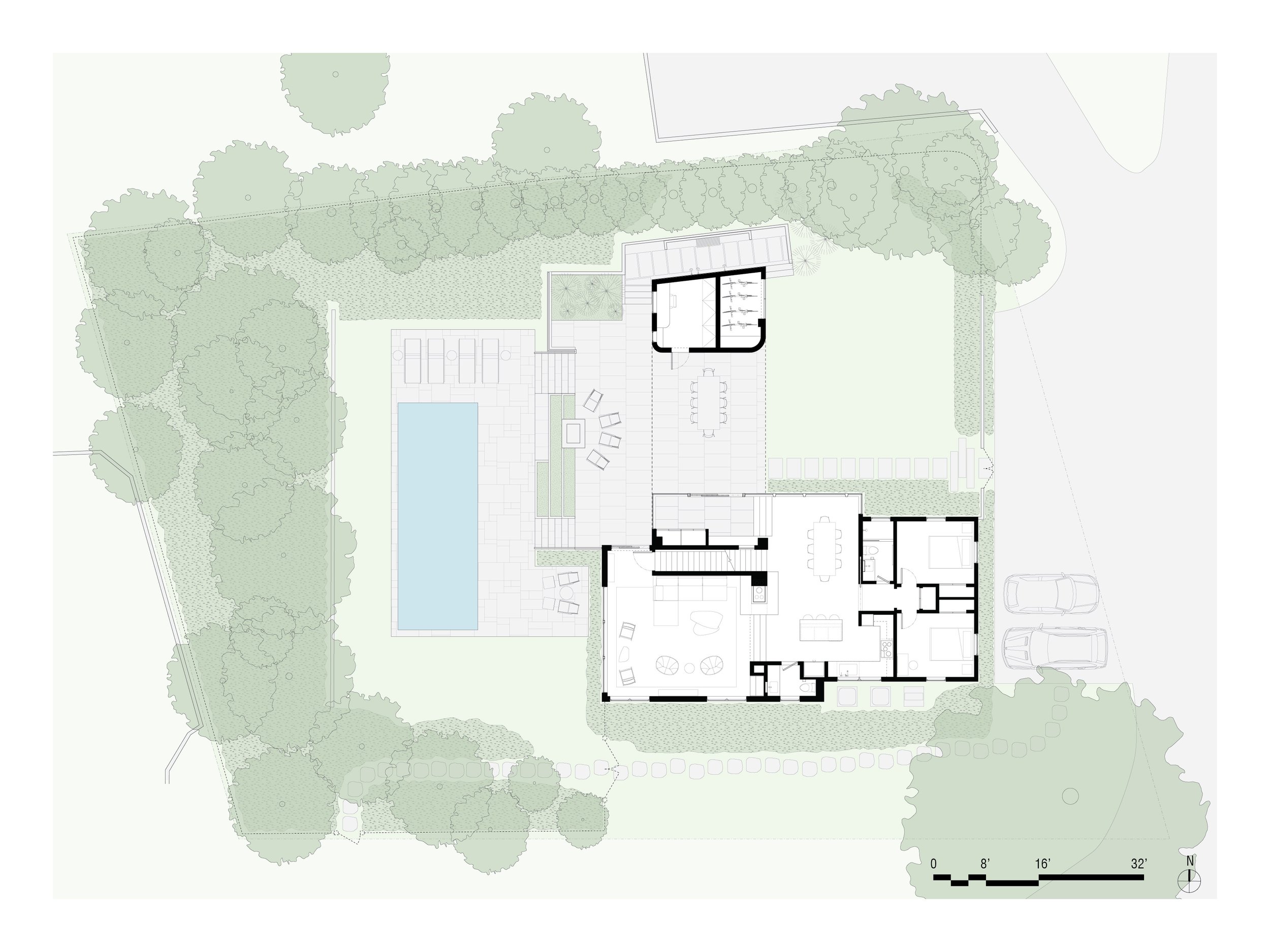
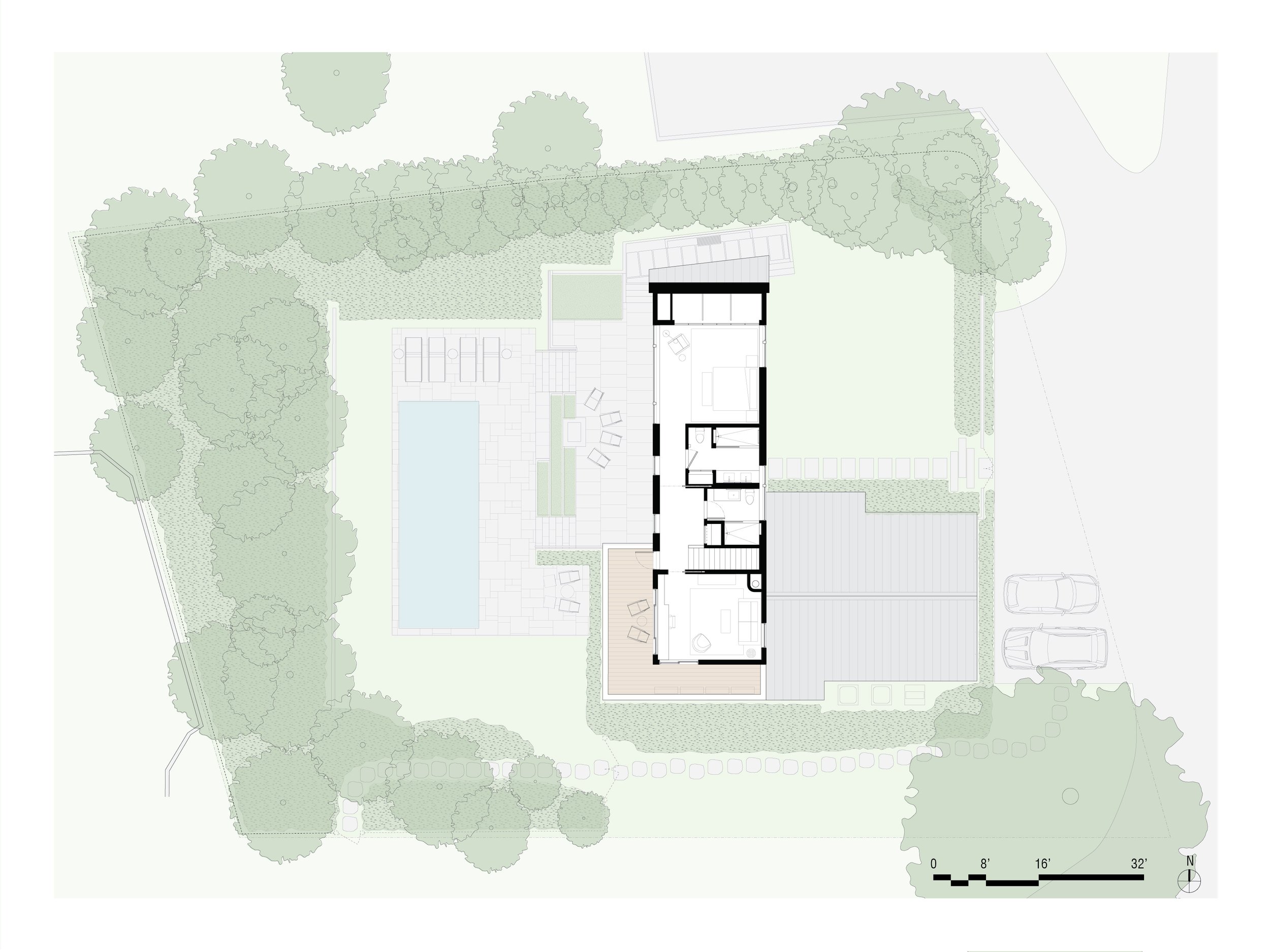
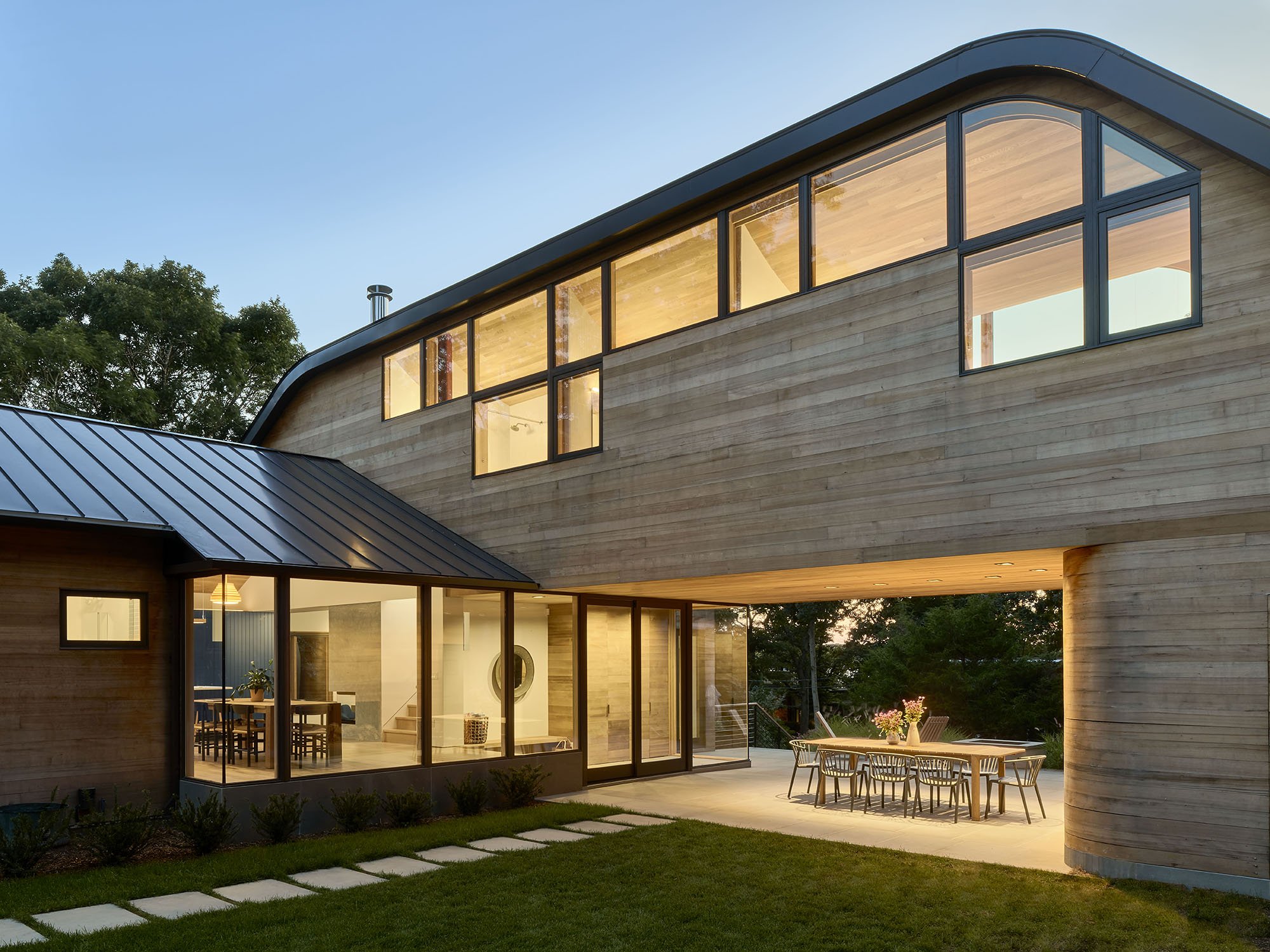
THREE MILE HARBOR HOUSE, EAST HAMPTON, NY
An addition to a house in the Springs was an opportunity to reconceive its relationship to the site overlooking Three Mile Harbor. The house, originally built as an uninsulated shingle cottage in a tight-knit waterfront community, had been added on to multiple times, resulting in a collage of styles and materials. Our clients bought the house and lived there for many years before asking us to redesign it to provide additional living space, create connections to the outdoors, and improve views of the harbor.
We added on at the second floor level to maximize views and capture the famous Long Island light beloved by artists through east- and west-oriented windows that transform the house throughout the course of the day. The second floor was conceived as a bridge over a new covered outdoor patio, supported by a private office that provides a sanctuary from the main house. The organic forms of the house were inspired by driftwood, worn by the sea. We relocated the main entry from the street to the interior courtyard, where one experiences views of the pool court and harbor from the covered dining terrace before entering the house.
Sustainable features are embedded in the design. The lot sizes in this shore community are small, making it difficult to locate water wells and septic systems that meet set back requirements. During design, we organized enough neighbors to have the town water line extended up the private road, allowing the community to connect to town water. To minimize construction waste, we saved almost the entire ground floor, basement and foundations.
A nitrogen-reducing septic system was installed to protect groundwater quality. The house is clad with thermally modified wood siding, expected to last at least 50 years. Roof-top solar panels supply 50% of the house’s electrical demand.
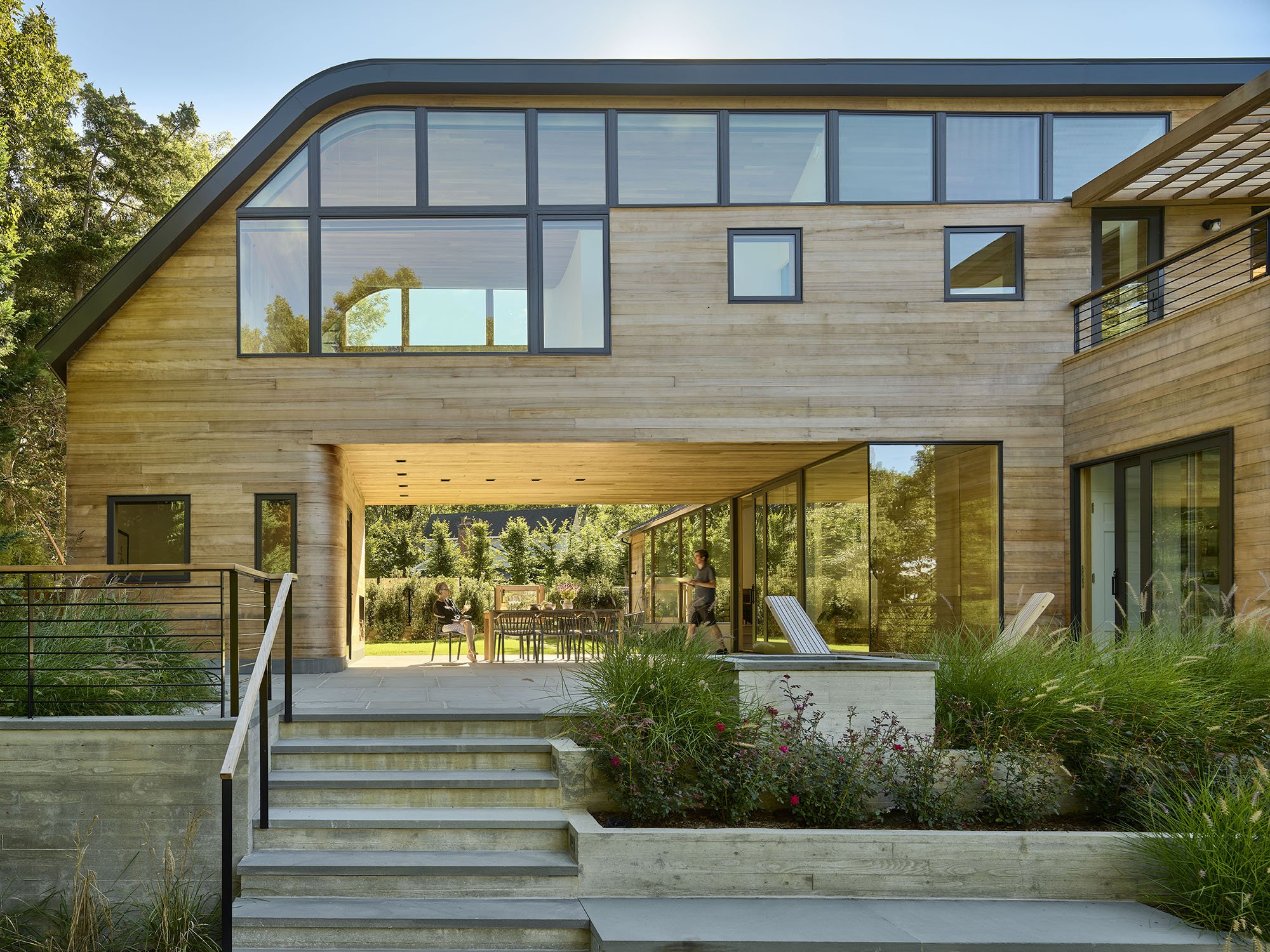

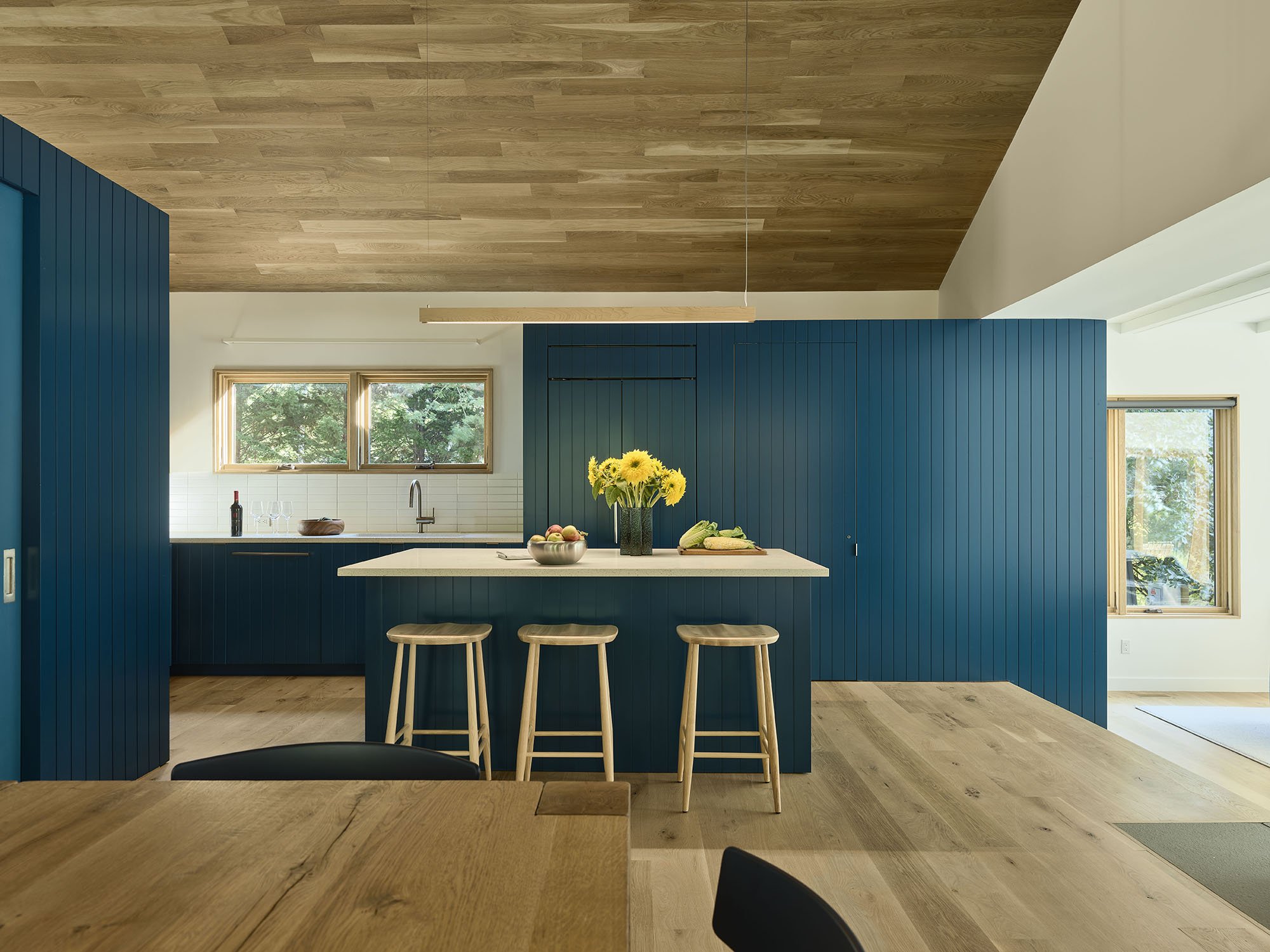








Site Plan

Second Floor

Concept Diagram

